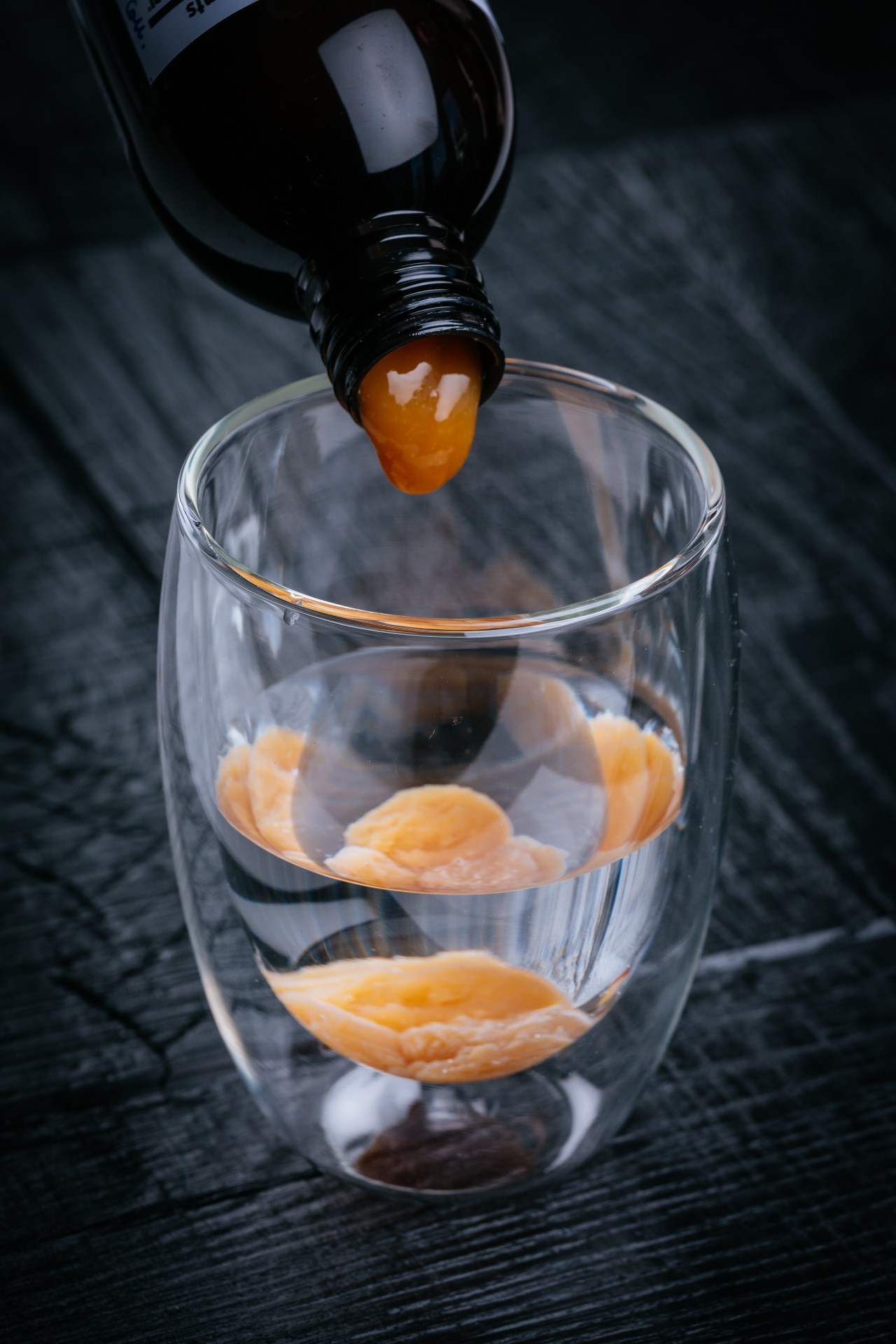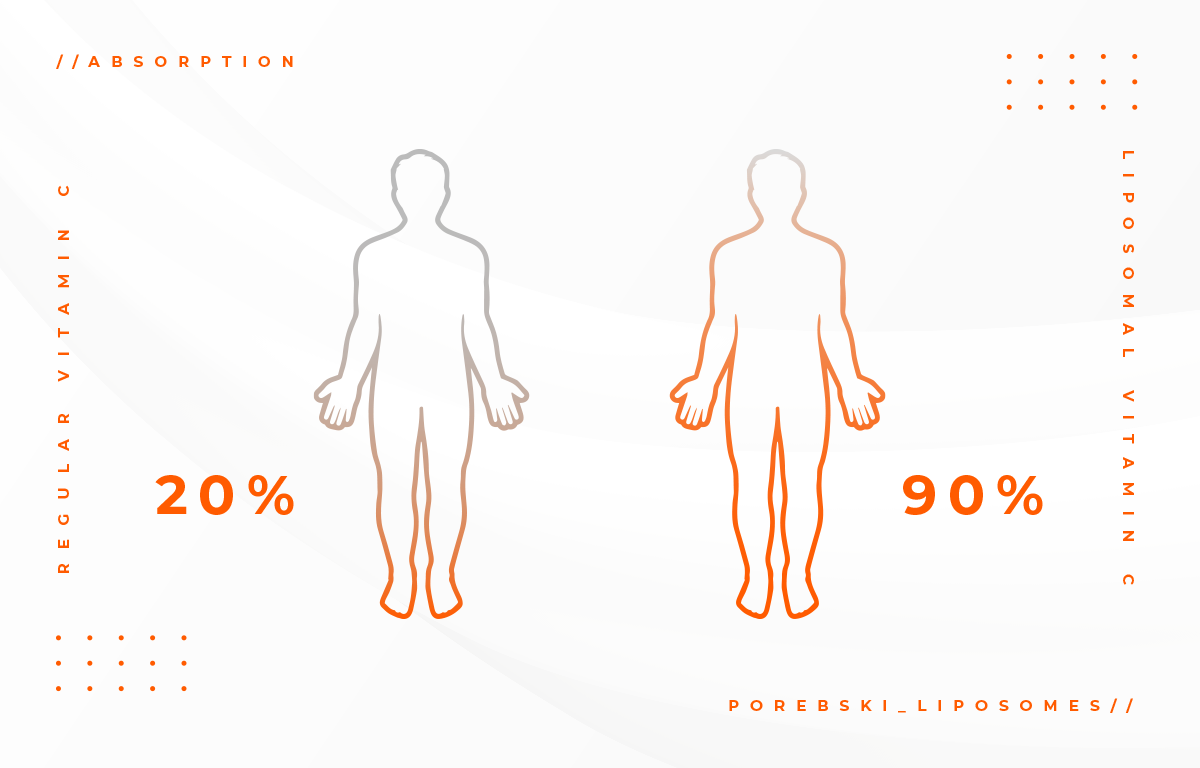Components
Porebski Liposomes are committed to product testing. Our independent Laboratory testing confirmed our products to be safe to be consumed for the users. Our products have proven the presence of uniform, nanosized liposomes.

Liposomes
Researchers discovered that liposomal formulations can be used to protect and transport therapeutic substances such as drugs, but also nutrients and vital substances.
Liposomes are used for drug delivery due to their unique properties.
Because of their composition, liposomes can pass through the intestinal wall and into the bloodstream for distribution to the cells. In this way, they offer maximized absorption with every dose by breaking through your body’s nutrient absorption barriers. From there, they can assimilate into the cells and through the cell membrane to release the nutrients.

Benefit #1
The rough environment of the stomach can damage some active ingredients. Encapsulation in liposomes protects the active ingredients in the digestive system.
Benefit #2
Liposomes are preferentially absorbed at the intestinal wall, as they consist of phospholipids just like our cell membranes. Through normal fat absorption, the active ingredients then enter the enterocytes (intestinal cells) directly, and from there into the blood via the lymphatic system.
Benefit #3
This delivery approach provides enhanced efficacy and lowered the incidence of side effects as compared with conventional formulations, whereas it also reduces skin irritation, staining, and attribute-controlled release.

Vitamins
Vitamins are a group of substances that are needed for normal cell function, growth, and development. Because we can’t make most of them, we have to get them from our diets. There are 13 essential vitamins. This means that these vitamins are required for the body to work properly. They are: Vitamin A, Vitamin C, Vitamin D, Vitamin E, Vitamin K, Vitamin B1 (thiamine), Vitamin B2 (riboflavin), Vitamin B3 (niacin), Vitamin B5 (Pantothenic acid), Vitamin B7 (Biotin), Vitamin B6, Vitamin B12 (cyanocobalamin), Folate (folic acid and B9)
Vitamins are grouped into two categories:
Fat-soluble vitamins are stored in the body’s fatty tissue. The four fat-soluble vitamins are vitamins A, D, E, and K. These vitamins are absorbed more easily by the body in the presence of dietary fat.
Water-soluble vitamins. There are nine types. They are not stored in the body. Any leftover water-soluble vitamins leave the body through the urine. Although, the body keeps a small reserve of these vitamins, Vitamins and minerals are considered essential nutrients—because acting in concert, they perform hundreds of roles in the body. They help shore up bones, heal wounds, and bolster your immune system. They also convert food into energy and repair cellular damage.
Benefit #1
Release energy. Several B vitamins are key components of certain coenzymes (molecules that aid enzymes) that help release energy from food.
Benefit #2
Build proteins and cells. Vitamins B6, B12, and folic acid metabolize amino acids (the building blocks of proteins) and help cells multiply.
Benefit #3
Make collagen. One of many roles played by vitamin C is to help make collagen, which knits together wounds, supports blood vessel walls, and forms a base for teeth and bones.

Minerals
Minerals like calcium, phosphorus, magnesium, etc comes with amazing health benefits. Some of the benefits include maintaining bone health, reducing muscular dystrophy- muscles weakness, promoting strong bones, maintaining blood vessels function, promoting dental health, improving brain function, ensuring blood circulation, and much more. The body needs many minerals; these are called essential minerals. Essential minerals are sometimes divided up into major minerals (macrominerals) and trace minerals (microminerals). These two groups of minerals are equally important, but trace minerals are needed in smaller amounts than major minerals. The amounts needed in the body are not an indication of their importance.
A balanced diet usually provides all of the essential minerals. The two tables below list minerals, what they do in the body (their functions), and their sources in food. Antioxidants are compounds in foods that scavenge and neutralise free radicals. The process of oxidation in the human body damages cell membranes and other structures, including cellular proteins, lipids and DNA. When oxygen is metabolised, it creates unstable molecules called ‘free radicals’, which steal electrons from other molecules, causing damage to DNA and other cells.
The body can cope with some free radicals and needs them to function effectively. However, the damage caused by an overload of free radicals over time may become irreversible and lead to certain diseases, including heart disease, liver disease and some cancers (such as oral, oesophageal, stomach and bowel cancers). Oxidation can be accelerated by stress, cigarette smoking, alcohol, sunlight, pollution and other factors.
Benefit #1
One of the key tasks of major minerals is to maintain the proper balance of water in the body. Sodium, chloride, and potassium take the lead in doing this. Three other major minerals — calcium, phosphorus, and magnesium — are important for healthy bones. Sulfur helps stabilize protein structures, including some of those that make up hair, skin, and nails.
Benefit #2
Trace minerals carry out a diverse set of tasks — ferrying oxygen throughout the body, strengthens bones and wards off tooth decay, helps form several enzymes, one of which assists with iron metabolism and the creation of hemoglobin, which carries oxygen in the blood.
The other trace minerals perform equally vital jobs, such as helping to block damage to body cells and forming parts of key enzymes or enhancing their activity.
Benefit #3
Other dietary food compounds, such as the phytochemicals in plants, are believed to have greater antioxidant effects than vitamins or minerals. These are called the non-nutrient antioxidants and include phytochemicals, such as lycopenes in tomatoes and anthocyanins found in cranberries.
Do you have any questions?
If you want to know more about our products or ingredients we use in them,
feel free to contact us! We will happily answer any of your querries.
